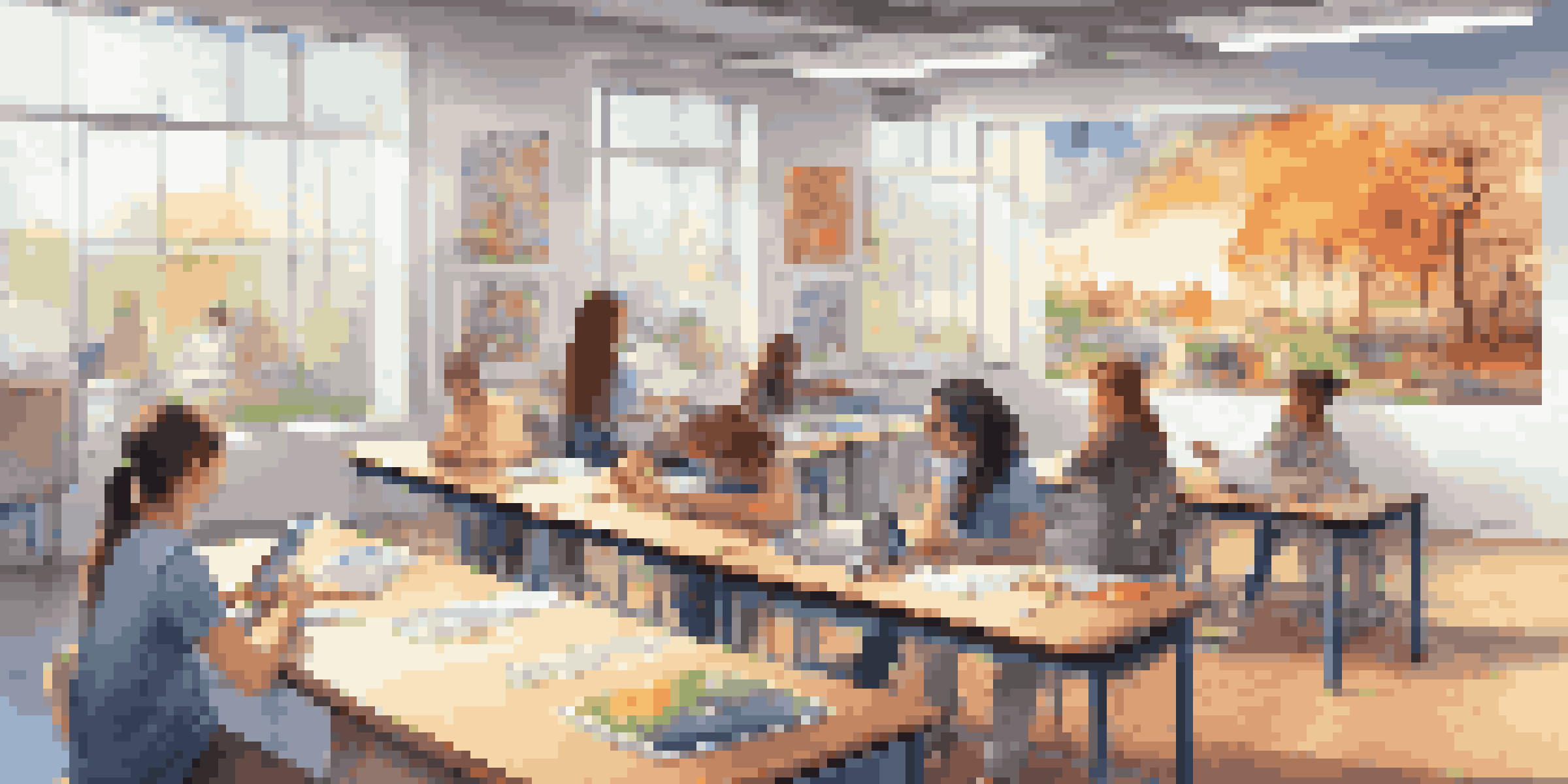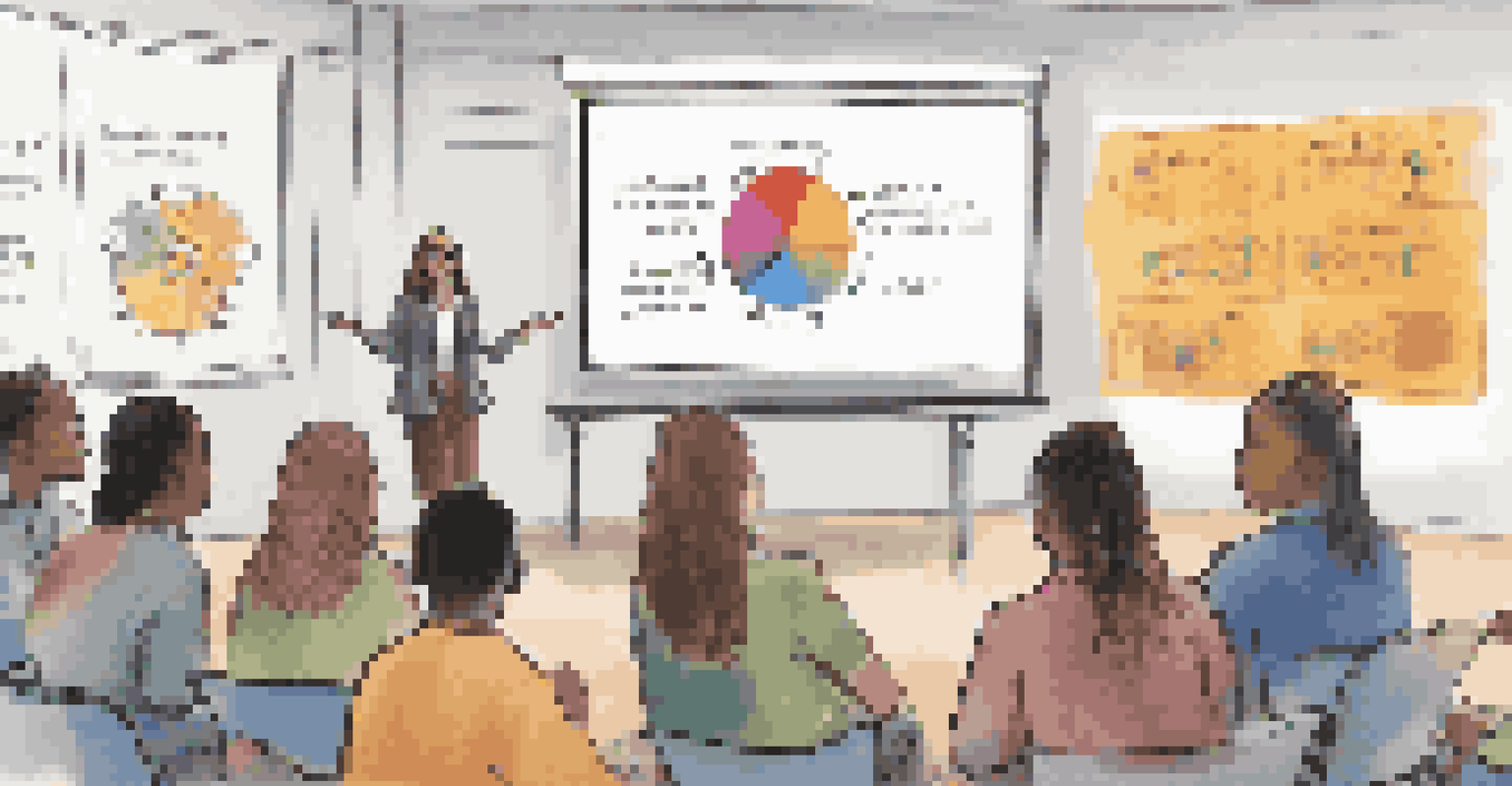Assessing Blended Learning's Impact on Student Critical Thinking

Understanding Blended Learning in Education
Blended learning combines traditional face-to-face teaching with online instruction, creating a flexible learning environment. This approach allows students to engage with material in various formats, catering to diverse learning styles. For instance, a student might watch a video lecture at home and then participate in a hands-on activity during class, reinforcing their understanding.
Education is the most powerful weapon which you can use to change the world.
By blending these methods, educators can reach students more effectively, promoting deeper engagement with the content. This flexibility not only accommodates different learning paces but also encourages students to take charge of their own learning journey. With technology as a key player, blended learning can transform the educational landscape.
As we explore its impact on critical thinking, it's essential to recognize that blended learning isn't just about technology; it's about creating meaningful interactions. The balance between online and in-person experiences can lead to enhanced analytical skills and problem-solving abilities in students.
The Role of Critical Thinking in Modern Education
Critical thinking is a cornerstone of education, enabling students to analyze information, evaluate arguments, and make informed decisions. In today's fast-paced world, the ability to think critically is more important than ever, as students face a constant influx of information. This skill empowers them to discern credible sources from unreliable ones, fostering better judgment.

Educators aim to cultivate critical thinking by encouraging students to ask questions, explore different perspectives, and engage in discussions. This not only enhances their understanding of the subject matter but also prepares them for real-world challenges. When students learn to approach problems critically, they become more adept at finding innovative solutions.
Blended Learning Enhances Engagement
By combining traditional and online instruction, blended learning fosters deeper engagement and accommodates various learning styles.
Incorporating critical thinking into blended learning environments can further enhance these skills. By using online platforms for collaborative discussions and interactive assignments, students can practice articulating their thoughts and refining their reasoning abilities.
Assessing the Impact of Blended Learning on Critical Thinking
To understand the impact of blended learning on critical thinking, educators must employ various assessment methods. These can include quizzes, reflective essays, and group projects that require students to demonstrate their analytical skills. By evaluating students' ability to apply critical thinking in different contexts, educators gain insight into the effectiveness of their teaching methods.
The mind is not a vessel to be filled, but a fire to be kindled.
Additionally, feedback from students can provide valuable information on how blended learning influences their thought processes. Surveys and interviews can reveal whether students feel more empowered to think critically in a blended environment compared to traditional settings. This qualitative data complements quantitative assessments, offering a holistic view of student learning.
Ultimately, assessing critical thinking within blended learning environments helps educators refine their approaches. By identifying strengths and areas for improvement, they can adapt their strategies to better support students’ analytical development.
Examples of Blended Learning Strategies That Enhance Critical Thinking
Specific blended learning strategies can significantly bolster critical thinking skills. For example, the flipped classroom model allows students to engage with lecture materials at home and apply their knowledge during class discussions. This method encourages deeper comprehension and fosters an environment where students can challenge each other's ideas.
Another effective strategy is project-based learning, where students collaborate on real-world problems through both online and in-person interactions. This approach not only develops critical thinking but also enhances teamwork and communication skills. By working together, students learn to appreciate diverse perspectives and approach problems from multiple angles.
Critical Thinking is Essential Today
In a world overflowing with information, critical thinking equips students to analyze data and make informed decisions.
Incorporating technology tools, such as discussion forums and interactive simulations, can further stimulate critical thinking. These resources give students opportunities to analyze scenarios, make decisions, and reflect on the outcomes, all while receiving immediate feedback.
The Challenges of Implementing Blended Learning
While blended learning offers numerous benefits, it also comes with its fair share of challenges. One significant hurdle is ensuring that all students have equal access to technology and the internet. Disparities in resources can lead to gaps in learning, hindering the development of critical thinking skills for some students.
Another challenge is the need for educators to adapt their teaching methods for this blended approach. Teachers must be trained to effectively integrate technology into their lessons while maintaining engagement and rigor. This can require a shift in mindset and additional preparation time, which can be daunting for some.
Lastly, fostering a culture of critical thinking in a blended environment can be difficult. Educators need to create a safe space for students to express their thoughts, ask questions, and challenge each other constructively. Without this supportive environment, the full potential of blended learning may not be realized.
Future Directions for Blended Learning and Critical Thinking
As education continues to evolve, the integration of blended learning and critical thinking will remain a focal point. The future may see more personalized learning experiences that cater to individual student needs, further enhancing critical thinking skills. Adaptive learning technologies could play a crucial role by providing tailored resources based on students' strengths and weaknesses.
Additionally, as educators gain more experience with blended learning, they will likely discover new strategies to encourage critical thinking. Sharing best practices among teachers can lead to innovative approaches that enhance student engagement and analytical abilities. Collaborative efforts, both within and across institutions, will be vital for ongoing improvement.
Challenges in Blended Learning
Implementing blended learning presents challenges like technology access disparities and the need for educators to adapt their teaching methods.
Furthermore, as the workforce increasingly demands critical thinking and problem-solving skills, educational institutions must prepare students adequately. By continuously assessing and refining blended learning approaches, educators can ensure that students are equipped to navigate complex challenges in their future careers.
Conclusion: The Importance of Blended Learning for Critical Thinking
In conclusion, blended learning has the potential to significantly enhance student critical thinking skills. By combining traditional and digital teaching methods, educators can create engaging and interactive learning experiences. This approach not only fosters analytical skills but also prepares students for the complexities of the modern world.
As we continue to explore the impact of blended learning, it's essential to remain open to new ideas and methodologies. By embracing flexibility and innovation, educators can better support students in their critical thinking journey. Ultimately, the goal is to empower students to become thoughtful, informed citizens who can tackle challenges head-on.

As we look ahead, the collaboration between technology and pedagogy will be key in shaping the future of education. Through continuous assessment and adaptation, we can ensure that blended learning remains an effective tool for developing critical thinkers.